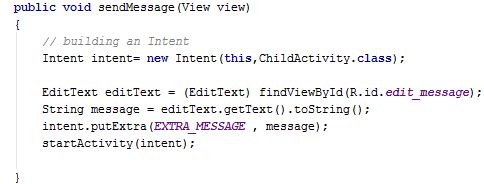

Verify that the branch name matches the branch name specified in the codelab.Navigate to the provided GitHub repository page for the project.If you haven't used git commands before, follow the below steps to download the code from GitHub. After you clone the repo, check out the code from the origin/starter branch. If you are familiar with git commands, note that the starter code is in a branch called "starter". Select this folder when you open the project in Android Studio.

When you download the starter code from GitHub, note that the folder name is android-basics-kotlin-words-app-starter. It may also contain code that is unfamiliar to you, and that you will learn about in later codelabs. Starter code may contain code that is familiar to you from previous codelabs. This codelab provides starter code for you to extend with features taught in this codelab. Download the starter code for this codelab Your task is to use intents so that the entire project is working, without having to build everything from scratch. While all the screens are implemented, you can't yet navigate from one screen to the other. Instead, you've been provided an incomplete version of the project, or starter project. There's a lot going on, but don't worry-you won't have to build an entire app just to learn about intents. The Words app is a simple dictionary app, with a list of letters, words for each letter, and the ability to look up definitions of each word in the browser. On the next few steps, you'll be working on the Words app.




 0 kommentar(er)
0 kommentar(er)
